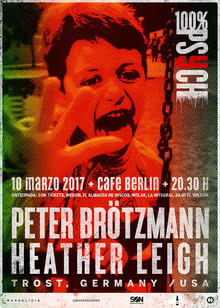

Via him, I learned to know Joseph Beuys, who started his activities in these years, in mainly Düsseldorf at the Akademie. I just had finished my studies at the art school, and there was quite an avant-garde gallery in Wuppertal called Parnass, and this guy was really very active, inviting artists from all over the world, and one of them was very young Nam June Paik from Korea, and I was lucky to assist him for this exhibition and some following stuff in Holland, Amsterdam and so on.Īnd he, I think, was the first really important person for me in my little art life. Yeah, that is a photo from a Nam June Paik exhibition we did in ’61 in Wuppertal. That’s actually you on the bottom left, right? Could we please look at picture number one. I would actually like to show a picture from the early ’60s that shows you, and it shows some other artists, and then maybe you can explain to. I started to study advertisement, graphics, paintings and so on. I studied at the Werkkunstschule in Wuppertal, which is a kind of following thing of the Bauhaus schools for example. But at that time, still, my goal was being a painter. So I organized myself a tenor saxophone and started to play. So I started to tour with them, and then, of course, one day they said, “OK Brötzmann, you need a saxophone. And so I joined them from time to time with my clarinet, and they didn’t send me home. But the whole shit started in Remscheid because we had a swing/bebop band there already with some advanced students from the Folkwang school in Essen. So I drove my parents and neighbors crazy.

But he had to leave school, and I grabbed his clarinet and started to play with my few records I had at that time. I forgot his name, I don’t know, but he was very good. We had at the high school, we had a swing/Dixieland band. My goal in the very early years was to be a painter, and I did that with quite some intensity, but music, and especially jazz music, was always on my side. And yeah, I grew up there, the usual school, high school and so on. Yeah, I was born in Remscheid, a middle-sized industrial town at the border of the Ruhr Area, and in 1941 it was I think. But you were born in Remscheid, to mention another one. We might get specific about it, about Dusseldorf versus Cologne versus Wuppertal, but they’re literally 20 minutes away from each other. That was recorded in Cologne, and I figured it’s important to explain that there will be many cities that we’re going to mention in this talk and they’re all about 20 minutes away from each other, so just ignore the city names, it’s one big region. In the intro, we’ve listened to a piece by Mauricio Kagel, “Ein Aufnahmezustand” which is from 1969. Please give a very warm welcome to Peter Brötzmann. In his lecture at Red Bull Music Academy 2018 in Berlin, Brötzmann talked about learning from the ’60s avant-garde, why he doesn't believe in teaching jazz and how improvisation comes down to fitting or fighting. In 2017 he released Live In Tel Aviv, a live album with trombonist Steve Swell and drummer Paal Nilssen-Love, and in 2018, his third studio collaboration with steel guitarist and singer/songwriter Heather Leigh, Sparrow Nights. With over 100 releases to his name, including some with jazz supergroup Last Exit, Brötzmann’s creative passions have not diminished.

#Peter brotzmann live free
His octet album Machine Gun remains a seminal free jazz album of the late ’60s, a genre-expanding work that aurally articulated the anxieties surrounding the Vietnam War and his country’s uncertain future. Primarily a saxophonist and clarinetist, Brötzmann has worked with experimental greats such as Dutch drummer Han Bennink, British fellow saxophone powerhouse Evan Parker and Japanese sound artist Keiji Haino, exploring an avant-garde, largely improvisational style of free jazz with his signature rough timbre. Peter Brötzmann is a revered free jazz musician from West Germany whose over 50-year career has taken him from the interdisciplinary radicalism of the late 20th-century Fluxus art movement to extensive collaborative and solo recording and performance.


 0 kommentar(er)
0 kommentar(er)
